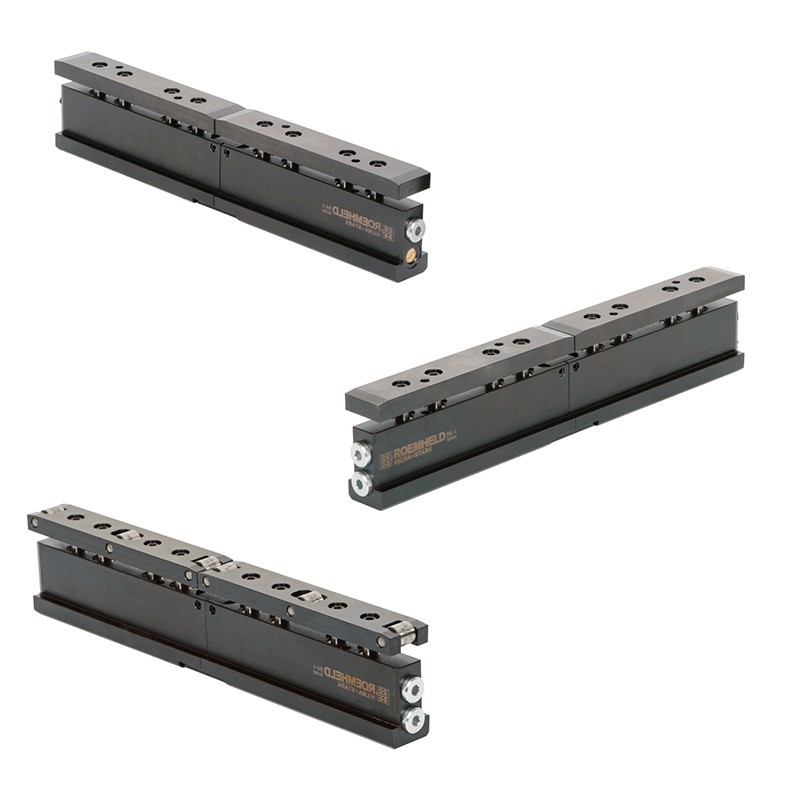








Double-T Clamping Bars
HILMA WZ 2.1832 Double-T Clamping Bars in three variations, preferably used in the press bed and ram
- Max. clamping force: 16.6 - 320 kN
- T-slot width: 18 - 28 mm
- Stroke: 8 - 12 mm
- Length: 150 - 1500 mm
Double-T Clamping Bars - HILMA WZ 2.1832
- Max. clamping force: 16.6 - 320 kN
- T-slot width: 18 - 28 mm
- Stroke: 8 - 12 mm
- Length: 150 - 1500 mm
Applications:
- For clamping dies on press bed and press slide
- When the available space is limited
- Special features:
- Max. operating pressure 400 bar, therefore no low-pressure circuit is required
- The complete clamping surface can be used
- No collision edges
- Easy and quick retrofit
- Ideal, uniform power transmission
Double-T clamping bar, single-acting with spring return, without support rollers: usually for use in a press but also suitable for use in a press bed.
The double-T clamping bar is installed by pushing it into the T-slots of the press slide or the press bed in any desired position. The bar is manually secured in position using locking screws in the root of the T-slot. The double-T design requires T-slots in the die and in the press or press bed. The clamping force is generated by applying hydraulic pressure to the pistons, and unclamping is carried out mechanically by spring return.
Double-T clamping bar, double-acting without support rollers: usually for use in a press ram but also suitable for use in a press bed.
Installation of the double-T clamping bar and generation of the clamping force are as described above, but with one additional clamping circuit for unclamping. The bar is automatically secured in position using locking pistons in the root of the T-slot.
Double-T clamping bar, double-acting with support rollers for lifting and clamping: usually for use in a press bed.
Installation and generation of the clamping force as described above, but with additional support rollers. A double-acting piston causes the support rollers to lift the die and to be clamped by a second clamping circuit. Before clamping the die is placed on the support rollers, i.e. it is not in contact with the press bed and can easily be moved in a linear direction and be positioned. Lifting, moving, positioning and clamping uses only one element.
If you can't find what you are looking for, need product pricing, delivery, technical support or associated services CONTACT HYQUIP or call our sales office +44 (0)1204 699959
| Quantity | Unit discount | You Save |
|---|




